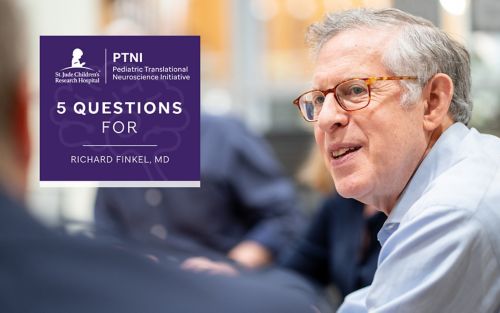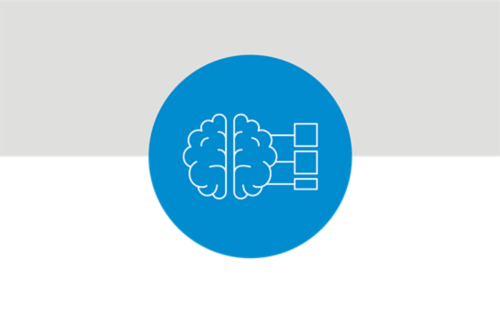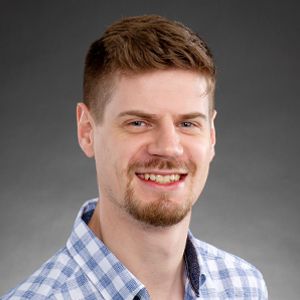St. Jude Family of Websites
Explore our cutting edge research, world-class patient care, career opportunities and more.
St. Jude Children's Research Hospital Home

- Fundraising
St. Jude Family of Websites
Explore our cutting edge research, world-class patient care, career opportunities and more.
St. Jude Children's Research Hospital Home

- Fundraising
5 Questions for Richard Finkel, MD

Richard Finkel, MD, leads the Center for Experimental Neurotherapeutics (CENT) to accelerate the clinical development of promising treatments for severe pediatric neurological diseases.
This question-and-answer series explores St. Jude investigators’ backgrounds, goals and accomplishments. Richard Finkel, MD, is the Director of the Center for Experimental Neurotherapeutics (CENT) within the Pediatric Translational Neuroscience Initiative (PTNI) and a member of the St. Jude Department of Pediatric Medicine.
A leading pediatric neurologist, Finkel joined St. Jude in 2020 to translate therapeutic findings to clinical application within PTNI after distinguishing himself for his work seeking spinal muscular atrophy (SMA) treatments. By shepherding therapeutic development through clinical application, Finkel, as Director of CENT, aims to further the understanding of and ultimately treat devastating neurological diseases in children.
1. What findings or approaches from early in your career are shaping care and treatment for pediatric neurologic diseases today?
The field of pediatric neurology has changed fundamentally since I first started over 30 years ago. There were a few drugs to treat epilepsy and not much else. The U.S. Food and Drug Administration (FDA) usually wants to see safety and efficacy in adults before children for legitimate reasons. But that’s not possible for progressive and serious diseases, which occur almost exclusively in infants and children.
I began this work in a series of clinical trials for different neurometabolic diseases using enzyme replacement therapy in the early 2000s. Around the same time, several companies were exploring therapies for treating neuromuscular diseases such as multiple sclerosis, which is largely an adult disease. When the gene for SMA was identified, treatments immediately began to be strategized, including one that ended up as nusinersen, an antisense oligonucleotide.
From this, we had to think about protocol design, outcome measures and biomarkers — we were ready to start comprehensive drug trials for these pediatric neuromuscular diseases.
Everything we are doing today is built upon these prior experiences, as we learned to do this better along the way. The FDA provided a lot of guidance, and there were many changes made in protocol design and statistical analysis, all of which ultimately helped us fine-tune clinical trial design in general.
2. How does CENT contribute to the overall goals of the PTNI?
PTNI is not trying to treat all neurological diseases. We identify and target areas within pediatric neurology with high unmet need, where the genes have been identified, the mechanism of disease is known, and we have a certain idea about the natural history of the disease. Hopefully, there are some outcome measures or biomarkers that have been developed that CENT can exploit in designing a clinical trial.
We've conceptualized to focus on six targeted areas within pediatric neurology, including my area of neuromuscular disease, along with neuropathies, genetically based epilepsies, muscular dystrophies, neurodevelopmental disorders and neurometabolic and neurodegenerative disorders.
If there are a relatively substantial number of patients, we propose a formal clinical trial. If there are very few patients, they might go into our personalized medicine program, where we can develop a drug for a small number of patients.
Neurological diseases are relatively new to St. Jude, so there have been some learning opportunities. St. Jude bodies, such as the Institutional Review Board (IRB), understand that what we do is a little different. They've been wonderfully receptive and have guided us to help if they don't have the internal expertise to review our protocols.
We also work to develop many relationships with third parties through the Office of Strategy & Alliances (OSA), which we wouldn't have been able to do on our own. Much rare disease research is done collaboratively with folks at other institutions, and St. Jude really emphasizes and promotes these collaborations.
3. What about PTNI and St. Jude resonated with your ambitions for treating neuromuscular disease?
The opportunities here are substantial, and not just in the clinical setting. St. Jude focuses on research, unlike traditional children's hospitals. Patients will always be the priority, but I can stay very focused here, which I find attractive. I also knew Dr. Taylor before joining (J. Paul Taylor, MD, PhD, Executive Vice President, Scientific Director, Chair of the Department of Cell and Molecular Biology and Director of PTNI). He's very thoughtful, and I saw he had quite an impactful vision to get on the ground floor of treating pediatric neurological diseases.
We wanted to address catastrophic diseases with high unmet need, which traditional places couldn’t address because they don't have the resources. Here at St. Jude, we can address things more quickly and efficiently because of the infrastructure that focuses on both basic and clinical research. There has never been a situation where I'd like to help a patient, but we lack the resources. That has not been an issue here. I get frustrated with people who accept mediocrity as being OK, and while we may not always reach it, that seems to be the theme here — to strive for excellence.
4. What are you proud to have accomplished through CENT so far?
We are doing clinical trials differently. For example, there were around 43 people here at St. Jude who were involved, in one way or another, in a novel single-patient investigational plan and research trial. People work with a sense of urgency here, so we were able to mobilize forces quickly. We had to get contracts with doctors in a different state and contracts with vendors to supply drugs to do the research assays. It had to be initiated immediately. We also have an office that’s experienced with submitting single-patient Investigational New Drug applications here at St. Jude. I had no idea — that hasn’t been the case in other places I have worked.
In addition, what attracted me to St. Jude was the opportunity to do investigator-initiated studies, which is most clinical research done here. We’ve already set up a couple of investigator-initiated studies and are working with other departments to collaborate internally. One example would be working with Dr. Puneet Bagga in the Department of Diagnostic Imaging, who is working on novel technologies we’re trying to utilize to evaluate some of our patients. We’ve worked closely with the Human Performance Lab (HPL). Not many places have an HPL or the kind of testing opportunities they provide.
All children’s hospitals have psychology departments, but here, they’ve been very receptive to providing neuropsychologists to participate in evaluating our patients. Similarly, biostatistics is available elsewhere if you want to pay for it. But here, if I send Dr. Motomi Mori (Department of Biostatistics chair) an email to talk about a new idea, 20 minutes later, she calls me asking what I have in mind. That’s what makes this place different — having that breadth of support.
5. What does the future hold for CENT?
PTNI is still recruiting new faculty and forging new partnerships, so exciting collaboration opportunities are on the horizon. Within the Center for Pediatric Neurological Disease Research (CPNDR), our fundamental research division, we have Dr. Heather Mefford, Department of Cell and Molecular Biology, who focuses on gene discovery for causes of early-onset epilepsy. We hope to bring some of what she’s developed into the clinic.
We’ve started to participate in some efforts with Friedreich’s ataxia and are also internally focusing on ataxia telangiectasia, two types of movement disorders. We’re hoping to hire a faculty member who can further develop that focus of the ataxias.
In due course, we hope to further develop our impact on selective neurodevelopmental disorders that are due to a single gene defect. Efforts are already underway here at St. Jude on the basic science side, looking at a couple of those conditions, such as HNRNPH2 from Dr. Taylor’s lab.
We are looking at all these areas where PTNI is growing and asking how to bring it all to the clinic. We’ve grown beyond just having more people and more studies. Really, we’re getting more and more ingrained in the fabric of St. Jude.














